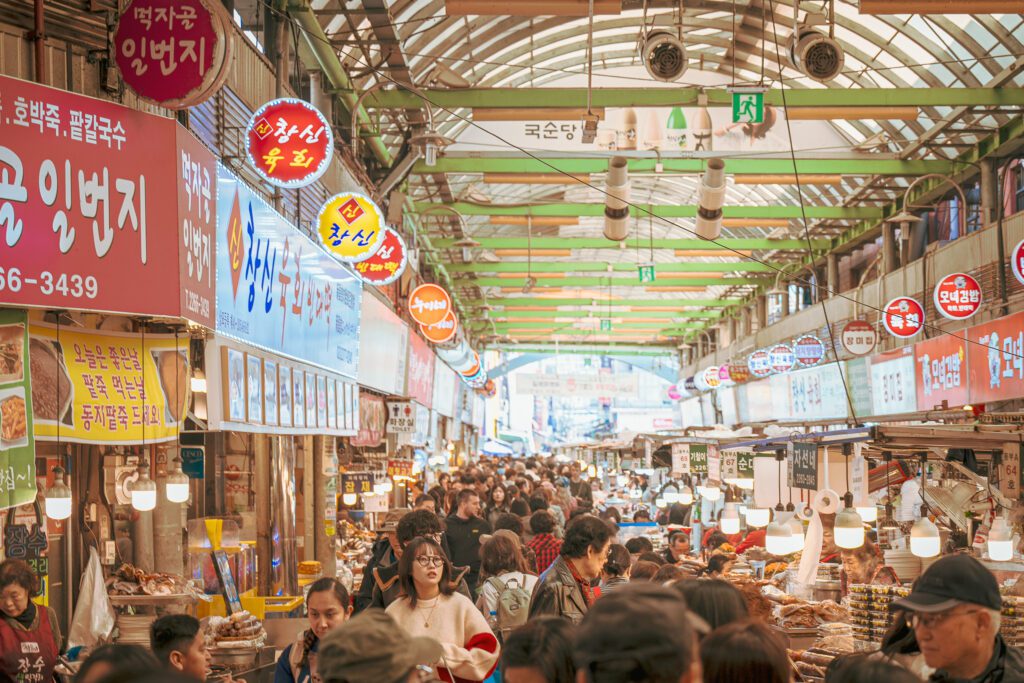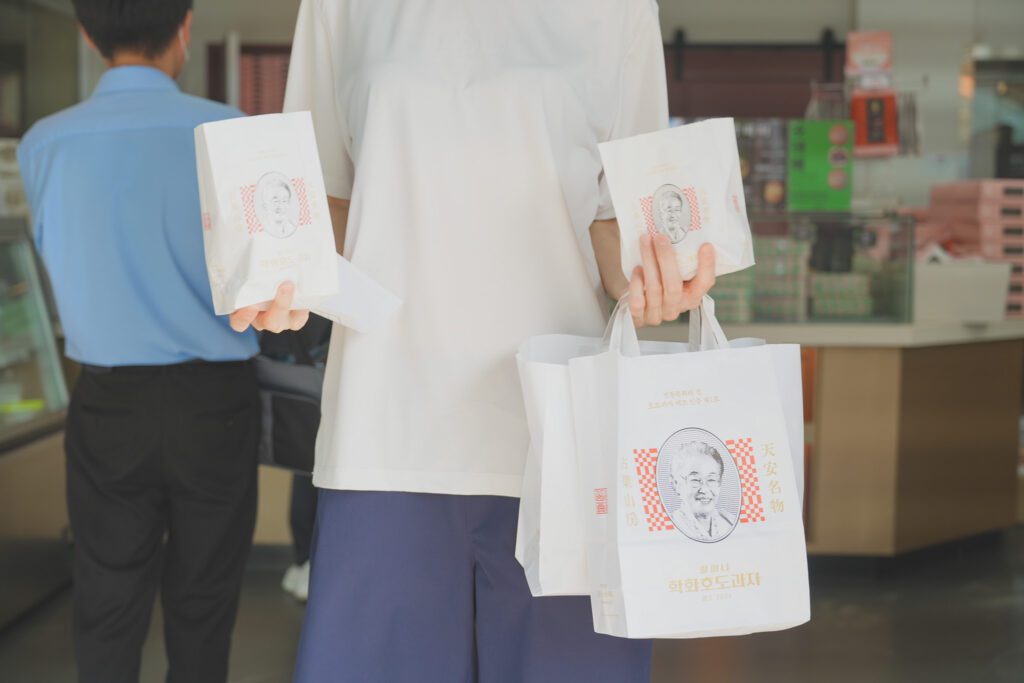
When you think of Cheonan, two things usually come to mind: Cheonan Samgeori and hodogwaja (walnut pastries). And honestly, the one we all know best is definitely hodogwaja. Every time you stop at a highway rest area in Korea, that nutty, sweet aroma just pulls you in. I used to think, “Aren’t all walnut pastries pretty much the same?” But nope—turns out the original really does taste different. After trying hodogwaja in Cheonan, I realized this snack absolutely deserves global fame.
Contents
Grandma HakHwa Hodogwaja (할머니 학화호도과자)
- Hours: 7:00 AM – 9:30 PM
- Price: 30 pcs ₩12,000 / 8 pcs ₩3,000 / Matcha Hodogwaja (12 pcs) ₩10,000 / Other variations around ₩10,000
- Address: 62 Mannam-ro, Dongnam-gu, Cheonan, Chungcheongnam-do
- Phone: 1811-6463
- Parking: Available
This place is legendary. Can you believe HakHwa Hodogwaja has been around since 1934? That’s over 90 years of history, almost a century-old brand. No wonder it’s recognized as Cheonan’s cultural heritage and has even been named a “100-year small business” by the government.
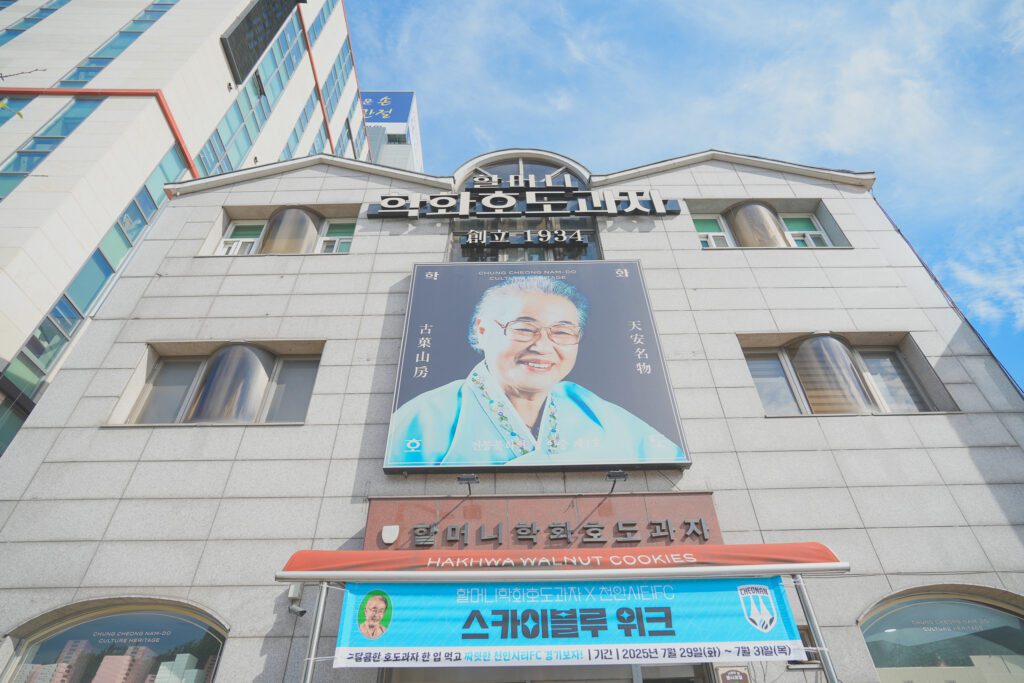
First Impressions
What caught my eye right away was the sign that says “호도과자” (hodo-gwaja), not “호두과자” (hodu-gwaja, the usual spelling). On the front of the building is the warm, smiling face of “Grandma,” which makes the shop really easy to spot. The whole building belongs to HakHwa Hodogwaja—the first floor is for take-out and the upper floors are research labs.
There’s also a big parking lot in the back, which is great for anyone driving in. You can’t miss the gold plaque outside either—it says this is the first officially certified traditional cultural store in Cheonan. Just like Daejeon is famous for bread, Cheonan truly is the city of walnut pastries.
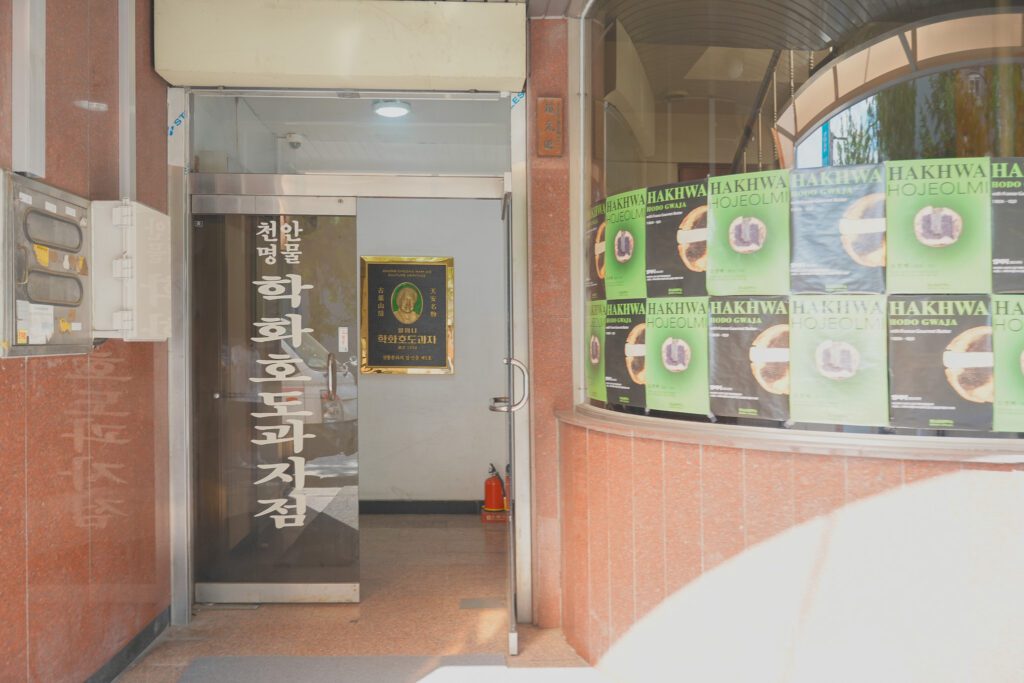
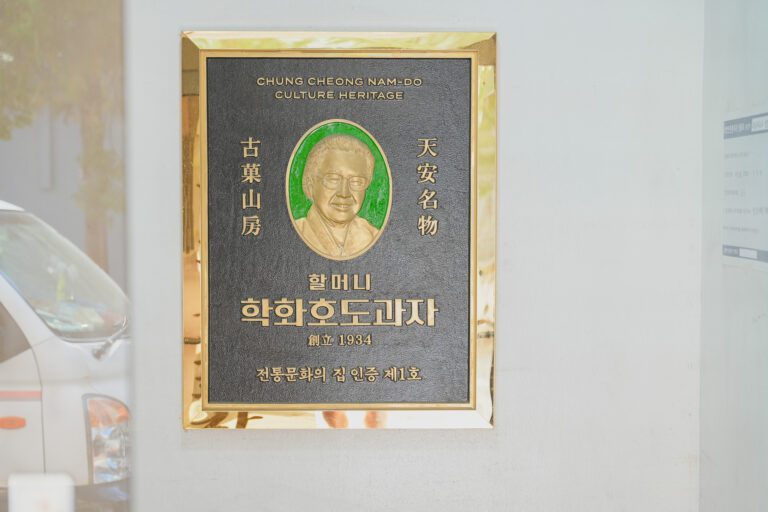

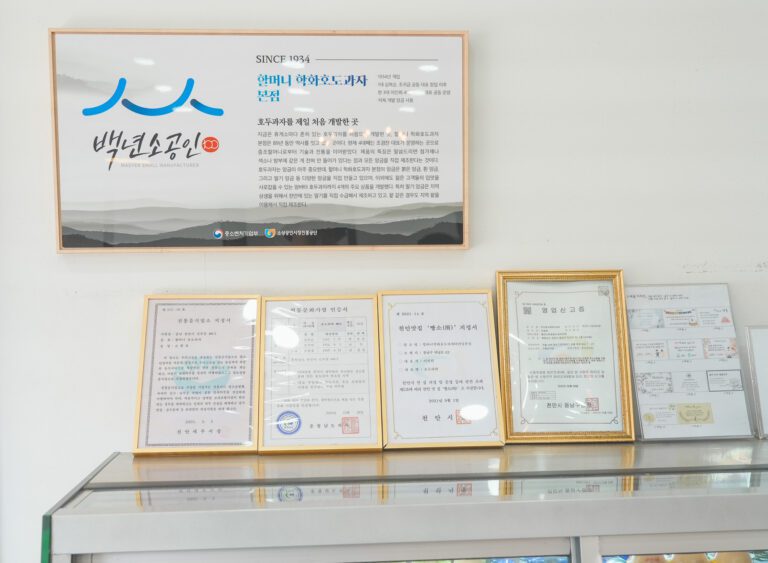
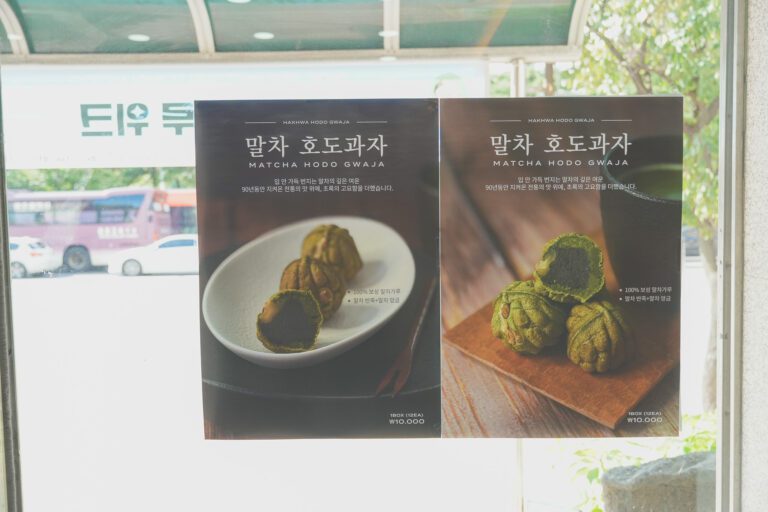

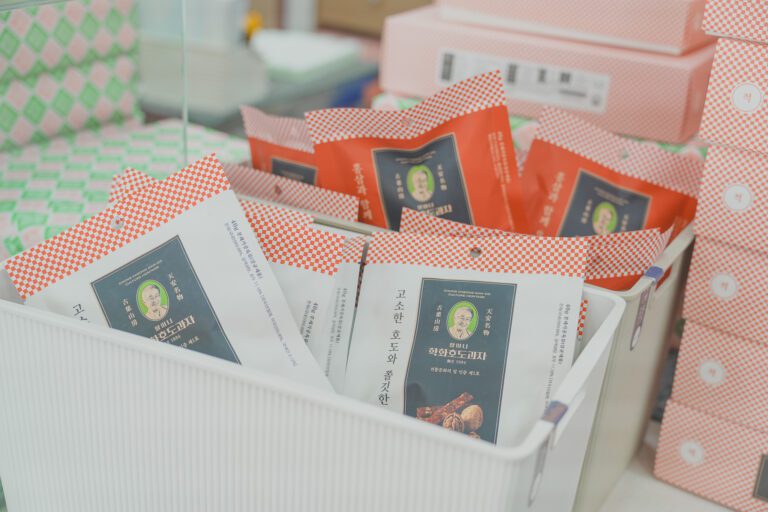
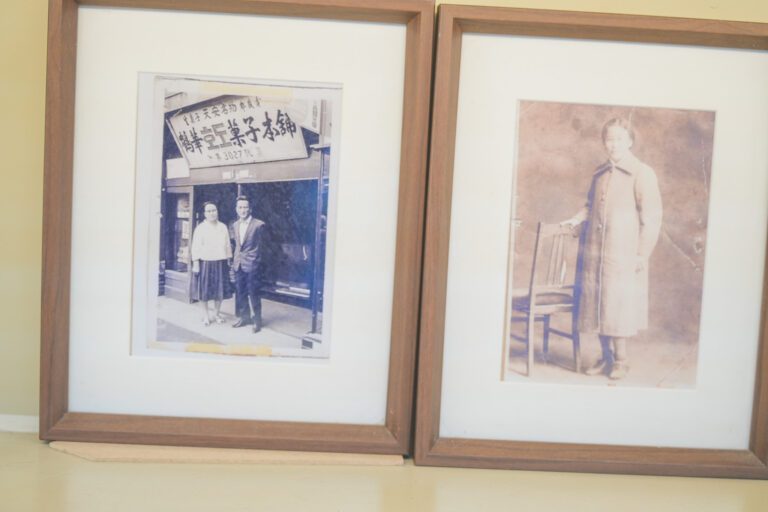
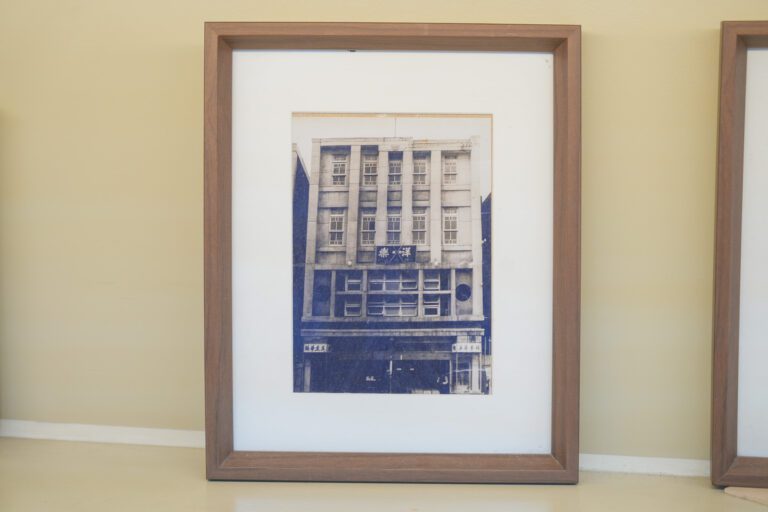
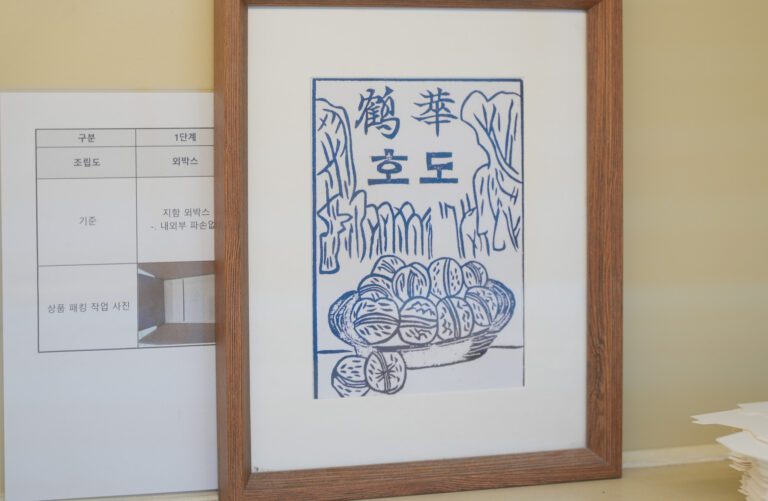
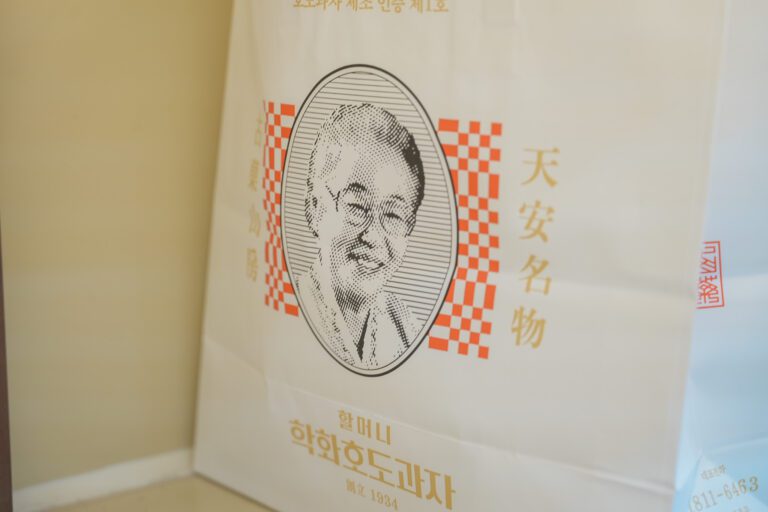
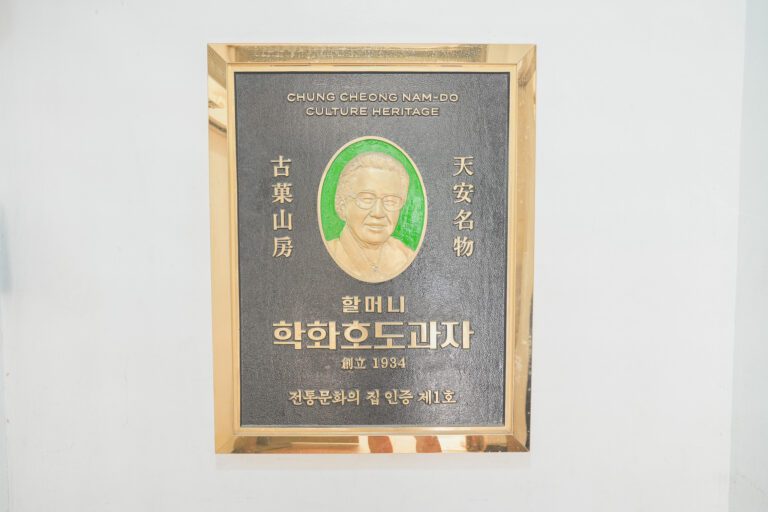
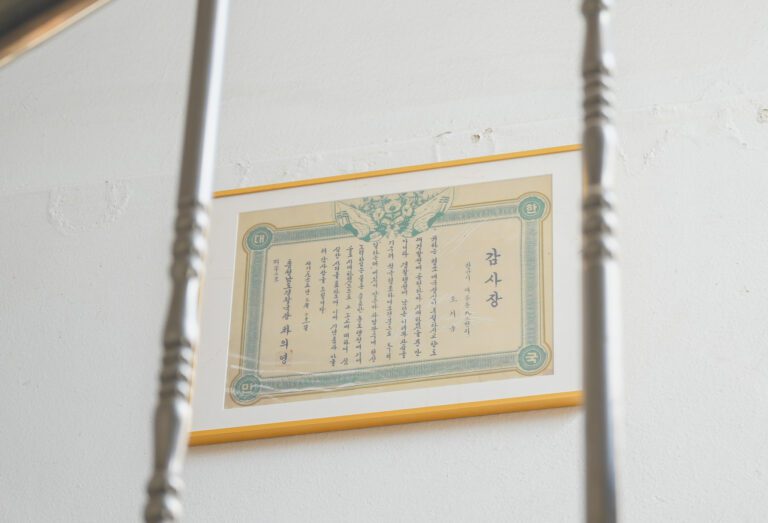
A Heritage Brand with a Modern Twist
Inside, you’ll see all sorts of certificates and awards on display. What stood out to me most was the “100-year Small Business” certificate. That’s not something you get easily—it means this family has been passing down the same recipe for four generations, ever since the very first walnut pastry was invented here.
I also loved how the younger generation has been rebranding the shop with stylish posters and packaging. It reminds me of how old brands like Gompyo flour got trendy again by mixing heritage with modern design. Walnut pastries in pretty gift boxes suddenly feel just as special as macarons or fancy cookies.
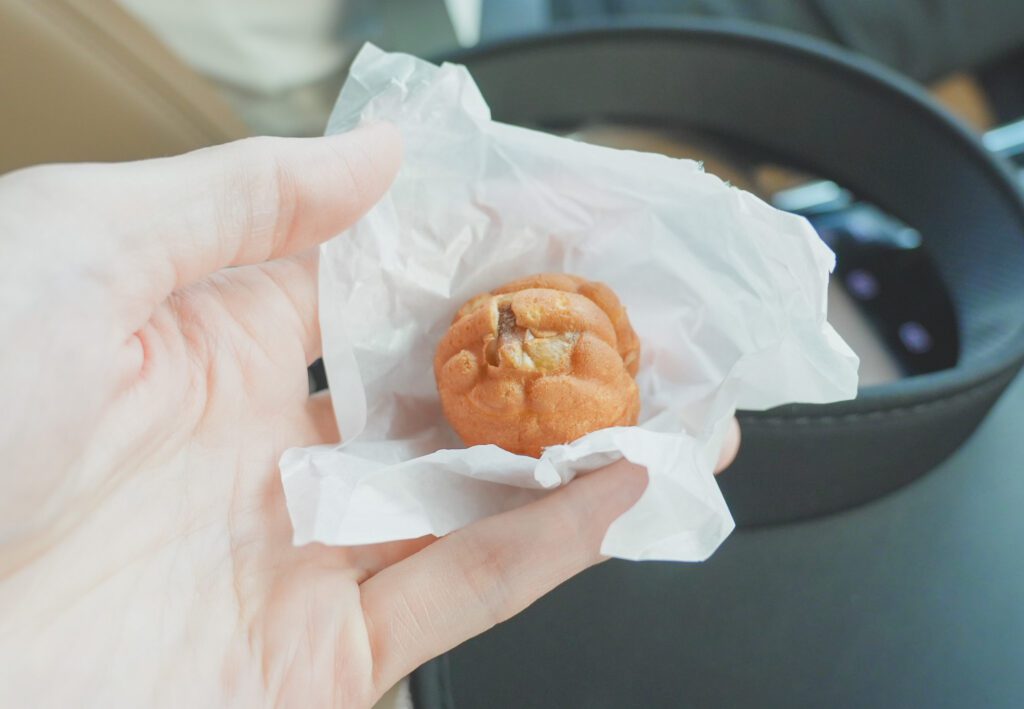
The Pastries
There are two main fillings: the classic red bean paste, and a lighter white bean paste. Both are made fresh daily, starting from dawn in big traditional cauldrons. The walnuts themselves are from California (fun fact!), but the recipe and process are strictly traditional. The white bean version is a little less sweet and super smooth, so you can eat several without feeling heavy.
They’ve also created fun variations, like Matcha Hodogwaja made with Boseong green tea, which pairs beautifully with tea. I could totally see that one being popular in Japan. There’s even a walnut-studded beef jerky they sell as a creative spin-off. It’s impressive to see a nearly 100-year-old brand still experimenting and innovating.
Final Thoughts
Before leaving, I couldn’t resist buying a few boxes to take home. Some people were buying 10 boxes at once (!), but we kept it simple with four. On the way back, I opened one up to try the white bean version—and wow. The outside is soft and fluffy, not too thick, with the filling packed inside. With milk or tea, it’s absolutely perfect.
We ended up snacking on them throughout our trip and giving some as gifts. Everyone who tried them said the same thing: “Now this is the real deal—the original taste.”
So if you’re ever in Cheonan, don’t miss out. Grandma HakHwa Hodogwaja isn’t just a snack, it’s a bite of history.




